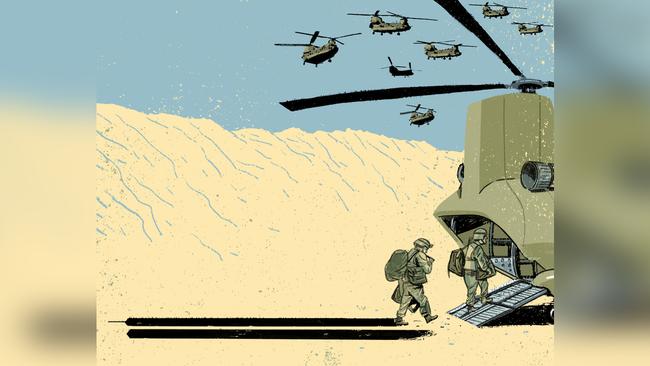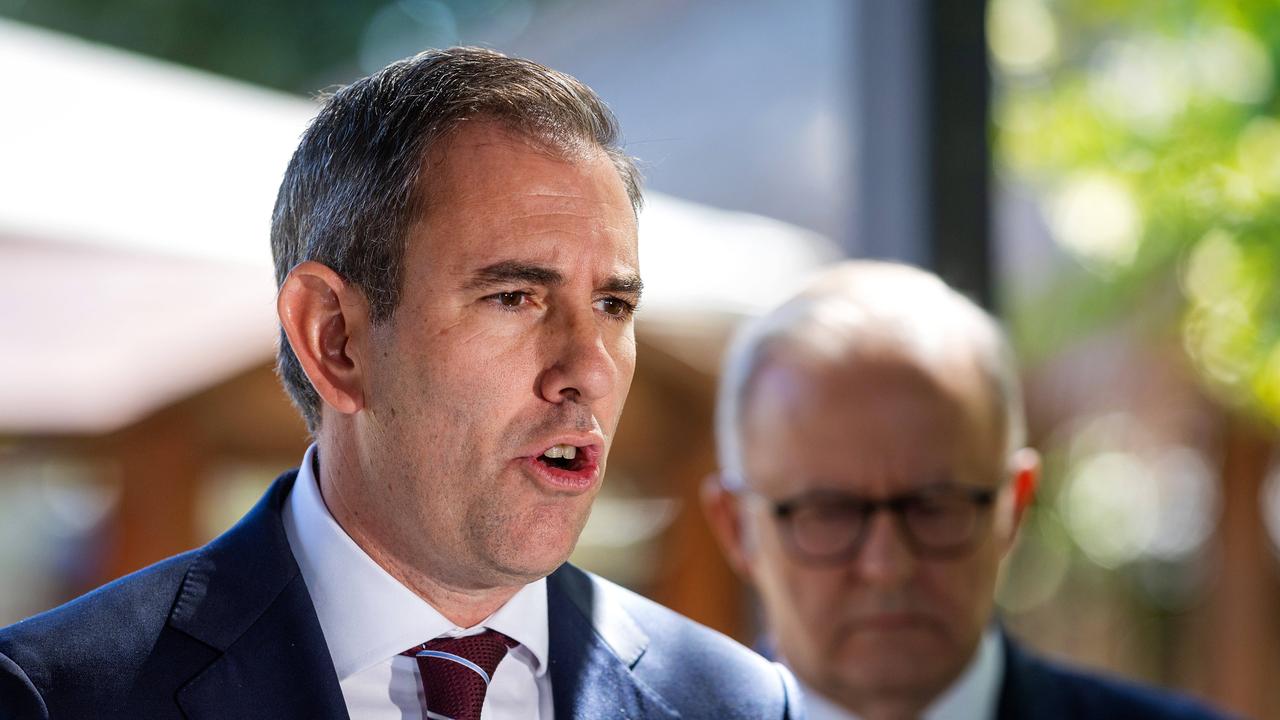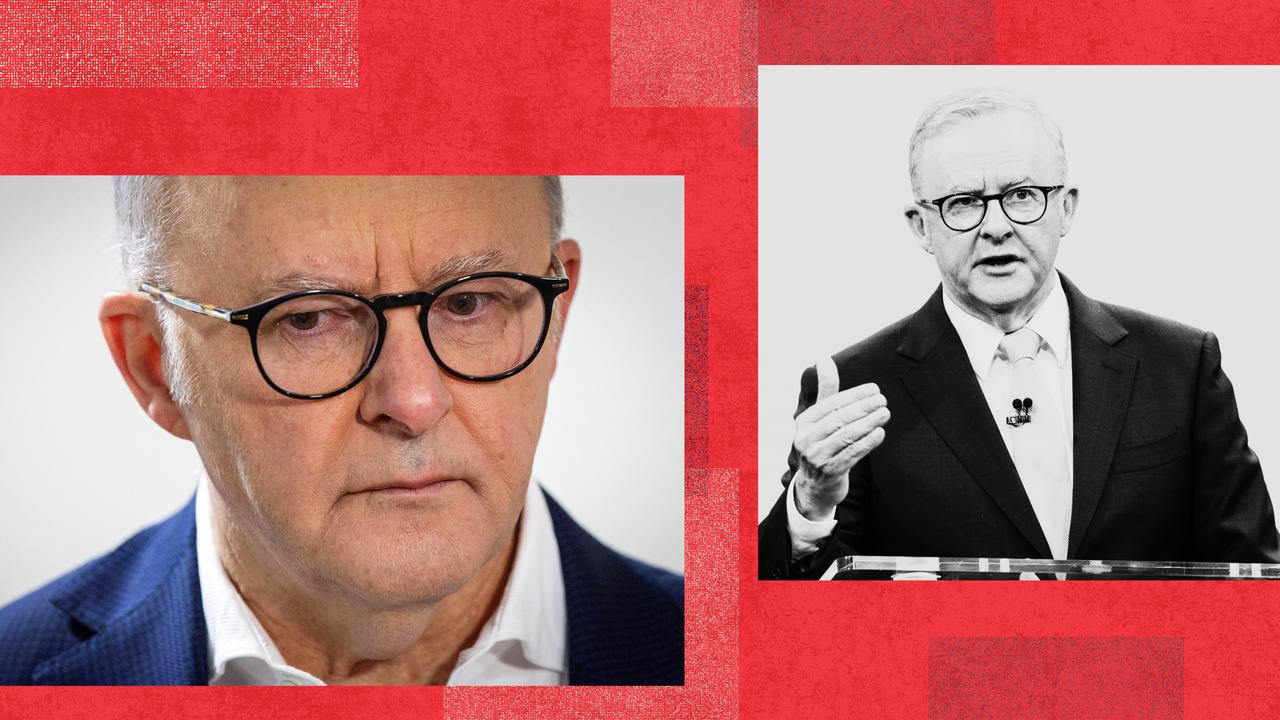Afghan war has cast the longest shadow

Few things in Afghanistan move fast. Its ancient mountain terrain mirrors the lines of history etched into the faces of its people. Even watches become impatient here.
The question is not whether the Taliban can be trusted (that’s obvious) but whether outsiders will stop interfering in Afghanistan to allow peace to hold. Let’s also remember the Australian soldiers who sacrificed so much.
The next phase involves reconciliation between the Taliban and Afghanistan President Ashraf Ghani’s administration. The Taliban utterly rejects the Afghanistan government and ultimately may seek to topple it.
The deal also would see an 18-month US troop withdrawal and the Taliban pledging not to harbour terrorists targeting the West. Both commitments are achievable. First, US President Donald Trump will withdraw troops in time for the US elections. Trump’s opponents remain blind to his habit of sticking to his promises. Nonetheless, you can bet all the rugs on Chicken Street in Kabul that the US will leave behind a few advisers, just in case. Second, as Winston Churchill discovered during his time in this region, “every tribesman has a blood feud with his neighbour. Every man’s hand is against the other, and all against the stranger.”
Through this system the US could use the Taliban to hunt down or keep out foreign terrorists. Twice in the past this proved effective. But beware. The wily Taliban will sip sweet tea with you in the morning and shoot you dead that night. It’s all a matter of where one sits along the value versus vulnerability matrix.
Ironically, the peace deal is with the same Islamist Haqqani Network the US armed and trained in the clandestine war against the Soviets in the 1980s. The CIA director at the time, William Casey, launched National Security Decision Directive 166. This saw an infusion of funds and US military hardware into Afghanistan and involved training Islamist guerrillas, or mujaheddin, in explosives and sabotage targeting Soviet armoured vehicles, tanks and senior officers.
Following the 9/11 terrorist attacks (planned by al-Qa’ida in Afghanistan), the US used various ethnic and tribal groups that formed the Northern Alliance to hunt al-Qa’ida and smash the Taliban. Cofer Black, the CIA counter-terrorism director, was inserting CIA paramilitary units with Afghan warlords. When asked by president George W. Bush if the US was up to this, Black said by the time the CIA had finished with al-Qa’ida, “they would have flies walking across their eyeballs”.
But let’s not be so naive. In Afghanistan, my enemy’s enemy is my friend and things can change rapidly. Importantly, the Taliban leadership doesn’t control all its hardcore fighters. It’s as much about local power and control — and money and drugs. The farther you move from Kabul, the more you enter another’s kingdom.
Afghanistan is notorious for seeing history repeat itself. In Return of a King, historian William Dalrymple describes the parallels between the recent war and that of the 1840s. The same tribal rivalries exist and the same battles are being fought in the same places, but under new flags with new ideologies and new political puppeteers. Foreign troops have been garrisoned in the same cities and attacked from the same hills.
A Pashtun proverb says: “A man bitten by a snake will be frightened of even a twisted rope.” But that appears not to apply to foreign powers in Afghanistan.
Afghanistan is a complex human terrain. Indeed, who are the Taliban? Beyond its formal structure, with its Qatari office, being a member of the Taliban is a state of mind. There are also criminal groups, warlords, drug barons and a conga line of corrupt politicians whose use of violence is often mistaken for the Taliban. There is no peace deal with these villains. And as British foreign secretary Lord Curzon once observed, fortunes are made from unsettled frontiers.
One of the risks to the peace deal is from Pakistan. Its Inter-Services Intelligence agency just cannot help itself when it comes to interfering in Afghanistan. Pakistan is paranoid about the possibility of Kabul aligning with New Delhi, and its fingerprints have been all over arming and funding the Taliban, “supporting” the US while supplying cells of insurgents with weapons and safe haven. This two-faced game may be because of the terrorist threat from Pakistan’s own radical Islamists.
There are accounts from US Special Forces operating along the Afghanistan-Pakistan border where they saw Pakistan military embedded with insurgents directing mortar attacks against them. The US soldiers could not call in airstrikes because of the political consequences of killing Pakistan military personnel.
A 2008 RAND study on counter-insurgency found insurgencies receiving support from external states won more than half the time. Former US national security adviser Jim Jones identified that a “pivotal time” came in 2006 when Pakistan “cut a deal” with tribal leaders allowing the Taliban to cross freely from Afghanistan as long as they didn’t attack Pakistani forces. The US has provided $US33bn of aid to Pakistan in the past 15 years. That was going well for Pakistan until Trump came along. It’s also not in the interests of Russia, Iran and China for the US to be withdrawing from messy, expensive conflicts. They could also be spoilers.
And let’s not forget the precious lives of the 41 Australian soldiers lost when forward-deployed in Oruzgan and elsewhere in Afghanistan. Then there are hundreds of returned veterans wounded mentally and physically. Without their sacrifices no peace deal would have been possible.
Jason Thomas teaches risk management at Swinburne University of Technology and is director of Frontier Assessments.



After almost two decades and at a cost of $US2 trillion ($3.07 trillion) and 100,000 lives, the US-NATO-led war in Afghanistan has come to an end with the signing of a peace deal with the Taliban.